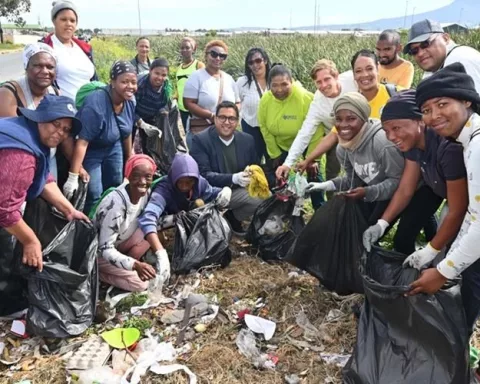South Africa has witnessed a shocking 193 child deaths in the past six months, with 86 being homicides. Recent high-profile cases have highlighted the need for targeted interventions to prevent such tragedies from happening again. The Western Cape Department of Health and Wellness Forensic Pathology Services is working to decrease child fatalities through key partnerships, but there is an urgent need for both authorities and communities to comprehend the root causes of such incidents and develop effective tactics to prevent their recurrence.
South Africa has seen a startling 193 child deaths in just the past six months, with 86 being homicides. Recent high-profile cases have brought attention to this grim reality, emphasizing the need for targeted interventions to prevent these tragedies from recurring. The Western Cape Department of Health and Wellness Forensic Pathology Services is engaging in promoting interventions to decrease child fatalities through key partnerships.
A Grim Reality
South Africa’s societal fabric conceals an unsettling narrative of escalating child fatalities. Recent horrifying accounts of the brutal murders of two young girls, along with the relentless search for another missing child, have cast an alarming light upon this grim reality. The alarming statistics furnished by forensic pathologists, indicating a startling 193 cases involving children in just the previous six months, with 86 being homicides, are spine-chilling.
The Dark Chronicles
The horrifying saga of child homicides was thrust into public consciousness with the shocking confession of 18-year-old Mikaeel Oliver. Accused of killing his 11-year-old neighbour, Monneashia Prins, the gruesome reality of his crime sent a wave of terror. Monneashia, a resident of Ithemba Farms informal settlement, mysteriously disappeared on February 9. Her lifeless body was tragically discovered a day later, concealed in a canal.
As public outrage intensified, another disturbing case emerged- that of 6-year-old Joshlin Smith from Saldanha on the West Coast. Joshlin was last seen in the custody of her mother’s boyfriend due to her illness. Upon her mother’s return from work, the child could not be located, instigating a frantic search operation.
Earlier in the year, the young life of Firdous Kleinsmidt, a 12-year-old Grade 7 student, was ruthlessly extinguished. Firdous, a student at Ieglaasi Nieyah Primary School in Mitchells Plain, was tragically killed in a shooting incident while waiting for her school transport. Lorenzo Brown, a man who previously faced a withdrawn murder case in 2022, now stands accused of Firdous’ murder.
The Mechanics of Child Deaths
Megan Davids, Communications Officer for the Department of Health and Wellness, shed light on the complex dynamics of these horrific incidents. While the primary role of the forensic department is to ascertain the cause of death, it is also engaged in promoting interventions to decrease child fatalities through key partnerships.
The Western Cape Department of Health and Wellness Forensic Pathology Services revealed a devastating total of 523 child deaths over the past six months. The reasons for these heart-wrenching fatalities spanned accidents, homicides, suicides, and sudden unexpected deaths in infancy (Sudi); a significant number of cases were still under investigation. The necessity for further inquiry to determine the precise cause of death was cited as the reason for the ongoing investigations.
Davids presented distressing statistics: 88 accident-related deaths; 86 homicides; 18 suicides; 65 road traffic incident casualties; 8 Sudi-related deaths; 65 natural cause deaths; and a shocking 193 deaths still under investigation.
A Call to Action
These alarming figures serve as a dire wake-up call highlighting the escalating crisis that is distressingly eroding societal foundations. They underscore the pressing need for both the authorities and communities to not only comprehend the root causes of such horrific incidents but also devise effective tactics to prevent their recurrence.
As these chilling scenarios continue to unravel, it is crucial to scrutinize the effectiveness of current systems and policies, to identify the gaps, and to advocate for more proactive measures. This entails not only rigorous legal penalties for culprits but also fortifying the support systems that can assist in averting such incidents.
The alarming data and the heartbreaking narratives behind each figure represent a plea for collective action. They emphasize the critical necessity for shared responsibility and targeted interventions to safeguard children’s futures. Echoing Nelson Mandela’s words, “There can be no keener revelation of a society’s soul than the way in which it treats its children.” Thus, it becomes the shared responsibility of an enlightened society to shield its most susceptible members and ensure their growth in a secure and nurturing environment.
1. How many child deaths have occurred in South Africa in the past six months?
There have been 193 child deaths in the past six months in South Africa, with 86 being homicides.
2. What is the Western Cape Department of Health and Wellness Forensic Pathology Services doing to decrease child fatalities?
The Western Cape Department of Health and Wellness Forensic Pathology Services is working to decrease child fatalities through key partnerships.
3. What are some recent high-profile cases that have highlighted the issue of child deaths in South Africa?
Some recent high-profile cases include the brutal murders of two young girls, Monneashia Prins and Firdous Kleinsmidt, as well as the disappearance of 6-year-old Joshlin Smith.
4. What are the reasons for child deaths in South Africa?
The reasons for child deaths in South Africa span accidents, homicides, suicides, sudden unexpected deaths in infancy (Sudi), and natural causes.
5. What is the urgent need regarding child deaths in South Africa?
There is an urgent need for both authorities and communities to comprehend the root causes of such incidents and develop effective tactics to prevent their recurrence.
6. What is the call to action to prevent child deaths in South Africa?
The call to action is for shared responsibility and targeted interventions to safeguard children’s futures, including rigorous legal penalties for culprits and fortifying support systems that can assist in averting such incidents.












